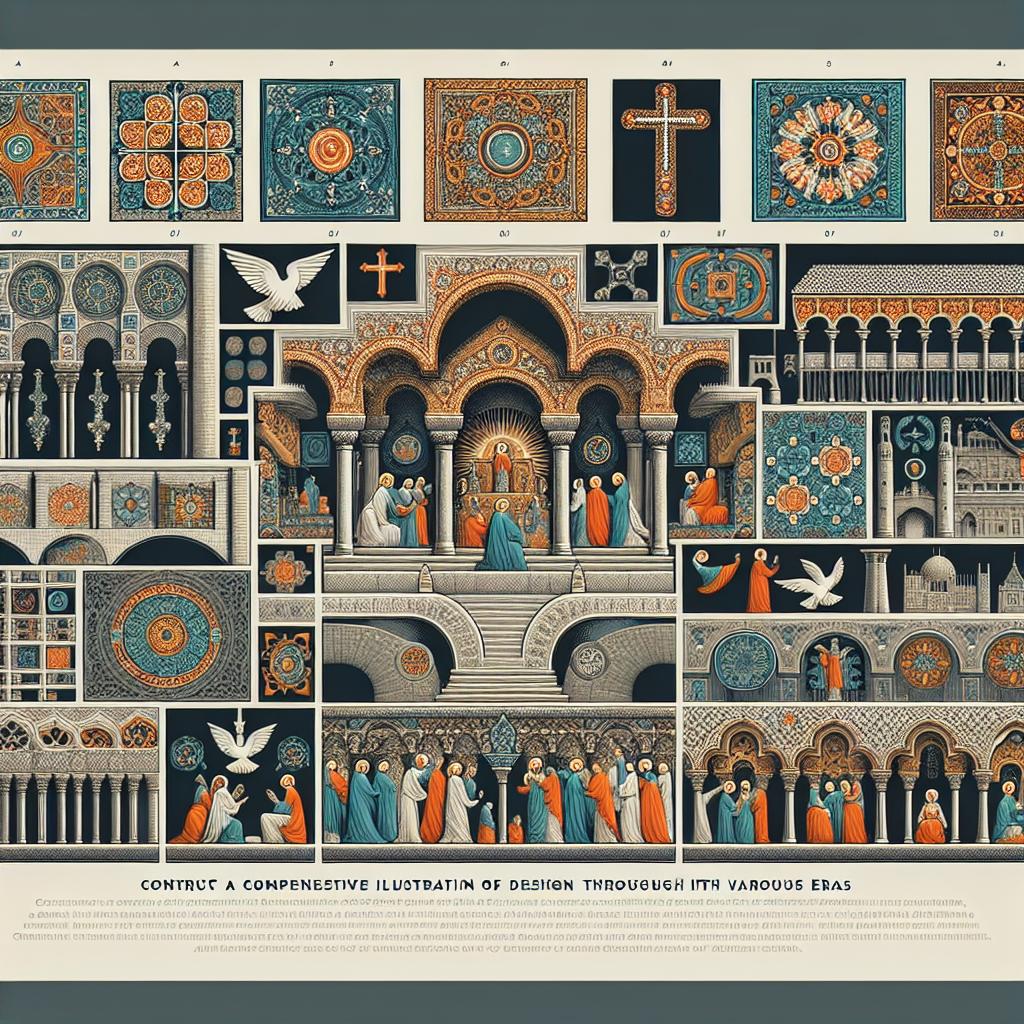
Divine Designs: A Brief History of Spanish Artistry in Christian Culture
Published: 01 August 2024
A Brief History of Design
Introduction
For centuries, people have debated whether the design in nature points to a Creator. This article explores the history of this argument, from ancient times to modern debates. By examining the perspectives of philosophers and scientists throughout history, we can better understand the ongoing discussion surrounding design in the natural world.
The Greek Evolutionists and the Fear of Gods and Death
In ancient times, there were two prominent schools of philosophy: the Epicureans and the Stoics. The Epicureans sought happiness through bodily pleasures and freedom from pain and anxiety. To achieve this, they proposed an atomic evolutionary theory that denied any purpose in nature.
Cicero, a Roman writer and statesman, challenged these ideas in his book "De Natura Deorum" (On the Nature of the Gods). He argued that purpose was necessary to create art and that since nature was more perfect than art, it also displayed purpose. Cicero used examples such as the movement of a ship guided by an intelligent hand, or a sundial showing time by design rather than chance. He questioned how anyone could believe that random collisions of particles could create something as beautiful as the world.
William Paley's Argument from Design
In the 18th century, William Paley presented a notable defense of the argument from design in his book "Natural Theology." He used the analogy of finding a watch in a field to illustrate that its complexity and functionality required a designer. Paley also pointed out evidence of design in the human eye and other complex organs.
While Paley's arguments were criticized by skeptics like David Hume, they still hold weight against many objections. The complexity found in biological systems, such as motors, transportation systems, blood clotting cascades, and visual machinery, suggests that they require multiple parts to function properly. These intricate designs cannot be explained by gradual natural selection alone.
Charles Darwin and the Theory of Evolution
Charles Darwin, who had admired Paley's work, developed his theory of evolution to explain how design in nature could occur without a Creator. He proposed that small beneficial changes could happen randomly and provide advantages for survival and reproduction (natural selection). Over time, these accumulated changes would supposedly lead to the complexity and diversity of life we observe.
The Modern Science vs. Darwin's Theory
Modern evolutionists, including Richard Dawkins, continue to use Darwin's theory to challenge the argument from design. However, their reliance on natural selection acting on gene copying errors (mutations) has been scientifically criticized.
The selection natural requires self-replicating entities, but producing even the simplest self-replicating organism through random combination of chemicals is more incredible than producing the Annals of Enius by throwing letters on the ground. Additionally, complex biological machinery, which Darwin overlooked, cannot be explained by gradual steps through natural selection alone. The accumulation of small advantageous changes would be too weak to overcome the effects of chance.
The Insufficiency of Design Alone
While the argument from design can condemn those who reject it, it cannot save them. The preaching of the Gospel is necessary to show people how they can have a right relationship with their Creator.
When Christians use the argument from design and other scientific evidence, they engage in pre-evangelism. By exposing the flawed assumptions of evolutionary presuppositions, they open people's eyes to the truth of God's Word. Just as the Apostle Paul challenged the philosophers in Athens by pointing them towards the true Creator, we must present a complete Gospel message.
Conclusion
The history of the argument from design spans centuries and continues to shape philosophical and scientific debates today. By understanding its roots and ongoing discussions, we can engage in meaningful conversations about the role of design in nature.
Why This Matters: The argument from design provides evidence for a Creator and challenges evolutionary explanations of the natural world. Understanding its history and implications helps Christians engage in conversations about faith and science.
Think About It: How does the argument from design influence your understanding of the natural world? How can you use this argument to engage with others about your faith?
